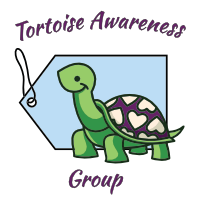Diet
Redfoots and Yellowfoots eat leafy greens, flowers, fruit, mushrooms, bugs, and meat.
When in doubt, The Tortoise Table is an excellent resource for finding out what your tortoise can and can’t eat. If you know the name of a plant and want to know if your tortoise can have it, type it into the Tortoise Table. It will tell you if they can have a lot of it, if they can have a little of it, if they can have the flowers, and if they can have the leaves. If you do not know the name of the plant, you can also search plants by flower color. You can also search a list of weeds and houseplants.
The Indoor Enclosure
Redfoots and Yellowfoots need to be kept warm and humid. A vivarium is great for them when they are little. They get fairly big though, so they will eventually outgrow most standard vivs. After that, you may need to get creative. Some people have extra large custom made vivs. Others have extra large tables that are covered or inside of a greenhouse. Even with a viv or greenhouse, you may need a fogger or humidifier to maintain a high enough humidity (around 80%).
Substrate
A mix of topsoil, coco coir, cypress mulch, and sphagnum moss is ideal for mimicking the rainforest floor that they would naturally live on and for staying humid.
Lighting/Temperature
Redfoots and Yellowfoots don’t typically like to sit directly under a heat bulb like most other species. Instead they like an enclosure that is warm all over (temps around 31C/87F) with a lower UV (a 5% UV tube is good). Keep the UV light on all day and off all night. A ceramic heat emitter (CHE) on a thermostat is ideal to keep the temperature up while also letting them sleep in the dark at night.
Outdoor Enclosure
An outdoor enclosure is very important for a tortoise. Unless you live somewhere very warm and humid, your Redfoot or Yellowfoot would also benefit from having a greenhouse with heat and a fogger as part of his outdoor enclosure.
Soaking
Hatchlings should be soaked every day for about 20 minutes. The water should be warm and should come up to about where their top shell meets their bottom shell. If you get an adult tortoise, soak him every day for the first couple weeks that you have him. After that, adults should be soaked two to three times a week. Make sure a shallow water dish that is big enough for your tortoise to climb in is available in the indoor and outdoor enclosure.
Keeping Multiple Tortoises
Redfoots and Yellowfoots are not as aggressive as many other species, so they get along with other tortoises better. Any new tortoises coming in should be kept completely separate for at least one year of quarantine. After that, they can meet if they are both still healthy and are both the same species.
Illnesses/Health Concerns
Respiratory infections can get very serious very fast. So it’s wise to schedule a vet appointment if your tortoise is sneezing or if you see snot/bubbles from his nose.
Parasites are very common in tortoises. So it’s wise to get a worm count done regularly. Do not worm your tortoise unless he tests positive for worms, and do not try to worm him without contacting a vet to get the correct dose of the correct treatment.
Tortoises have bacteria in their digestive tract. Different types of tortoises have different types of bacteria. Introducing two different types of tortoises can also introduce them to different types of bacteria, can make them sick and is therefore not recommended.
Tortoises should never be allowed to meet other pets, especially dogs. Dogs often chew on tortoises, so dog related injuries and deaths are very common.
Your tortoise should also not be allowed to roam the house freely. Not only will he not get the heat and UV that he needs while roaming the house, he will be vulnerable to dogs, to cats, to getting stepped on, dust, hair, chemical floor cleaners, etc.
Hibernation
Redfoots and Yellowfoots are non-hibernating species; never attempt to hibernate them.


